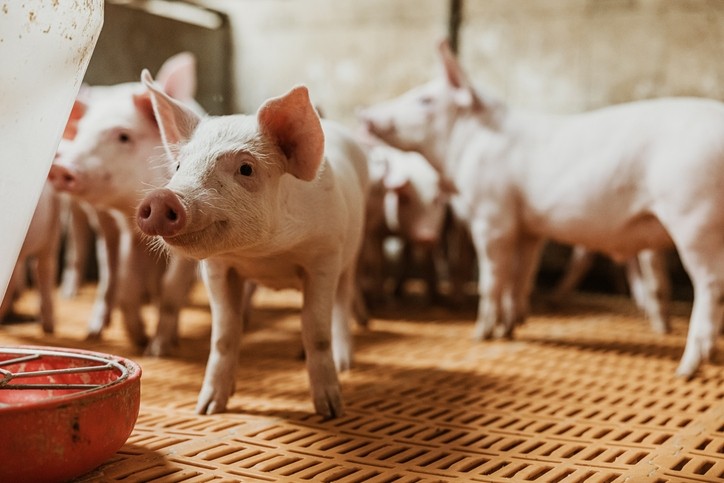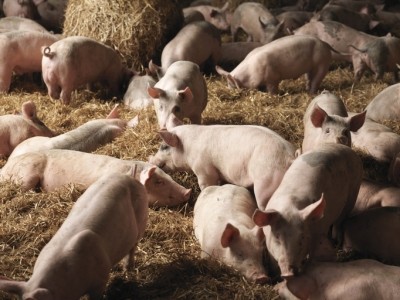Lallemand Animal Nutrition’s Swine Technical Meeting
How can bile acids influence the microbiota in piglets?

Ignacio Ipharraguerre, a senior scientist at the University of Kiel in Germany, presenting at Lallemand Animal Nutrition’s International Swine Technical Meeting in Madrid last month, shared studies in mice that show bile acids are crucial for postnatal development of a healthy gut microbiome.
He also highlighted how work done at his own lab suggests that secretion of those acids in sow colostrum help shape the piglets' gut bacteria. Additionally, that lab's research showed that the concentration of bile acids changes with the pig's age and tissue type, influencing growth and immune responses.
It was once thought that bile acids (BA) only helped with fat digestion and cholesterol management, but in recent decades it was discovered that the molecules also play a broader role in how the body, diet, and gut bacteria interact.
The understanding of biology of bile acids and their effects changed in the early 2000s, explained Ipharraguerre.
Scientists discovered bile acid receptors or sensors, learning that bile acids function as signaling molecules that mediate host physiological, metabolic, and immune responses. “Essentially, they send information from the gut to the host."
These regulatory functions of bile acids are primarily mediated by the nuclear receptor FXR and the G—protein coupled receptor TGR5 along with the enterokine FGF19, continued Ipharraguerre.
How live yeast can affect bile acid metabolism and signaling
Looking to explore further how bile acids affect piglet growth, Ipharraguerre and a team of researchers investigated if feeding live yeast Saccharomyces cerevisiae boulardii CNCM 1-1079 (LSB) to weanling piglets improves performance and health by affecting BA metabolism and signaling.
Sixty piglets were weaned at 28 days old and given either a control diet or a diet with LSB. Their weights were recorded at various points up to day 36. Researchers measured BA and the growth factor FGF19 in blood and feces samples.
The results, he outlined, indicate that piglets fed with LSB had better growth and higher body weight by day 15.
The observed increase in piglet weight gain, driven by the supplementation with LSB, was accompanied by alterations in the fecal bile acids profile and specific hormone plasma concentrations involved in energy expenditure.
“By day 6 we saw that the LSB fed piglets had a significantly higher concentration of microbial induced bile acids and that supplementation of the live yeast accelerated the development of the bile acid metabolizing capacity of the gut microbiome.”
Ipharraguerre believes these research findings coupled with multiple studies conducted on the role of bile acids in the maturation of the microbiota open up new avenues for understanding and enhancing the health and growth of young animals.
The Swine International Technical Meeting, held in Madrid mid-June, brought together around 150 industry experts from 26 countries to discuss the key issues impacting swine modern production, highlighting Lallemand's expanded range of microbial solutions.
The seminar's agenda was comprehensive, ranging from the sow to the fattening period.
After an overview of some of challenges that today’s pig producers face, the event focused on sow microbiota management, emphasizing its critical role in providing piglets with beneficial maternal imprinting. Presentations then moved to weaning piglets with a focus on post-weaning diarrhea and potential solutions to this widespread problem, as well as the importance of managing nutrient digestion kinetics for optimal absorption. The seminar concluded with a focus on heat stress and strategies to enhance energy metabolism in growing and finishing pigs.


















